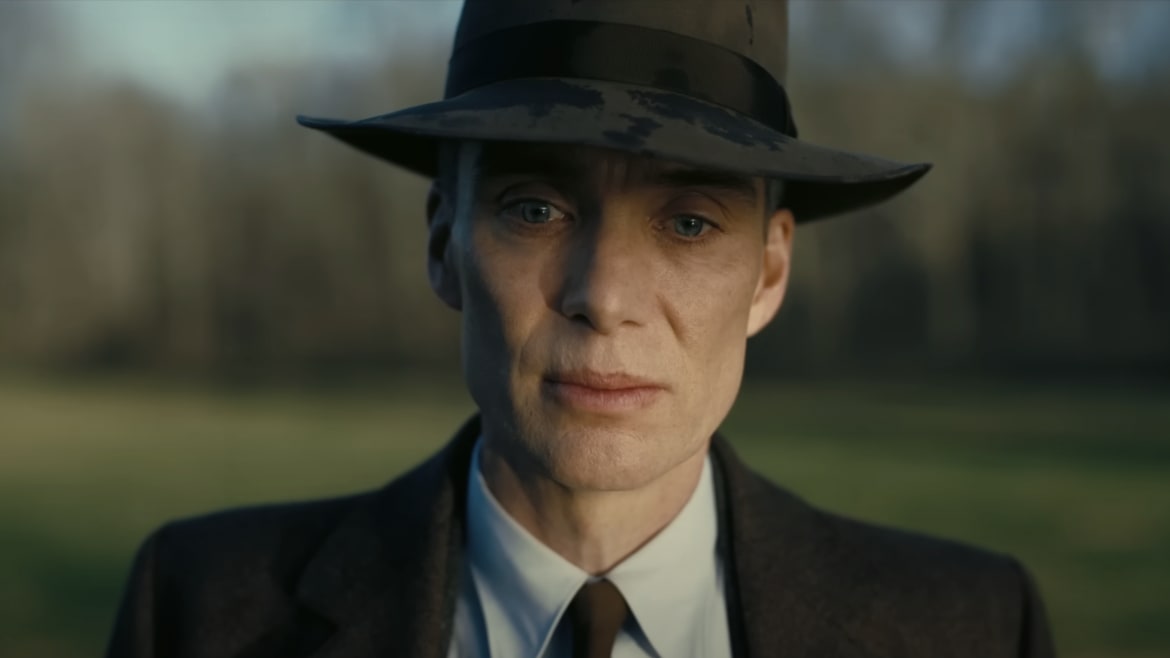Universal Pictures via YouTube
Near the beginning of Christopher Nolan’s biopic Oppenheimer, J. Robert Oppenheimer examines a Picasso painting. Femme assise aux bras croisés, painted in 1937, depicts a woman with teal skin as she sits in a chair with her arms crossed. Cillian Murphy’s blue eyes nearly pierce the screen as we observe him staring at it—but what, exactly, is he thinking?
In the film, Oppenheimer—known as the “Father of the Atomic Bomb”—encounters the painting at an inflection point in his studies. One of his idols, the Danish physicist and Nobel Prize winner Niels Bohr (Kenneth Branagh), has encouraged him to leave Cambridge, where he’s been struggling with his lab work, to focus on his real passion: theoretical physics. Newly energized, Oppenheimer begins throwing crystal glasses onto the floor of his apartment to watch them break. By day he’s wandering through museums, and after the sun sets, he’s reading T.S. Eliot’s “The Waste Land.”
In a particularly striking moment that lingers just long enough to feel significant, the physicist spends some time face-to-face with Picasso’s blue woman and her crossed arms. Murphy stares into the painting as though in a trance, as the camera zooms ever closer on her face.

